How to Use Buckwheat as a Summer Cover Crop
In many areas, especially in longer growing seasons, gardeners discover a mid-season fallow in parts of the garden where spring crops have harvested.
This comes as a surprise to many gardeners, often in June or July. It’s prime garden season. Our summer crops are growing elsewhere. And it’s not quite time to plant fall crops. But, I can assure you, if we don’t plant something in the space where spring crops have vacated, weeds will begin to cover that area. So, what can we do with that space?
Enter buckwheat — a unique, easy-to-grow, summer cover crop.
The benefits of cover crops are numerous — they cover the soil (suppressing weeds), prevent erosion, bring up nutrients from deep in the soil to nourish the topsoil, promote more healthy soil structure, feed beneficial fungal networks, and attract pollinators and beneficial insects (to name a few). Most cover crops are planted in the fall or early spring.
But buckwheat thrives in the summer and can provide a host of benefits to your garden, especially in those fallow areas in the middle of the season.
Learn more about buckwheat — from its unique benefits to growing it to cutting it down — in full detail on the latest episode of The Beginner’s Garden Podcast. You can listen to that here or keep reading for the highlights.
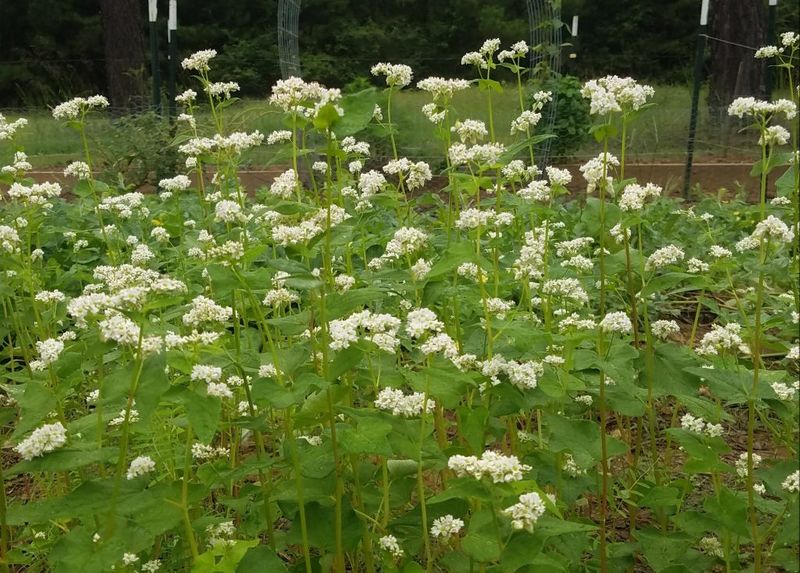
Benefits of Buckwheat
Weed prevention. Buckwheat is a fantastic weed suppressor, and it grows at a time of year where we fight weeds the most. Buckwheat grows faster than weeds do. But for the weeds that do breakthrough, buckwheat can smother them out by shading them.
When we stunt the growth of the weeds and keep them from flowering, they aren’t able to go to seed. Essentially, planting these cover crops helps with both short-term and long-term weed control.
Living mulch. Buckwheat, like other cover crops, offers the same benefits as mulch does. It protects the soil from erosion and conserves soil moisture.
Quick groundcover. While fall cover crops grow over many months, buckwheat is ideal for summer crops because it grows so quickly. Only needing around six weeks from seed to maturity, if you only have a few weeks that you need to cover your ground between plantings, buckwheat is your perfect cover crop choice. And don’t feel like you have to have six weeks. Even growth for a few weeks can provide benefit; it just won’t be able to set flowers.
Attracts beneficial insects. Speaking of flowers, the flowers of buckwheat provide pollen and nectar to pollinators, and it attracts other beneficial insects into our gardens. This is especially beneficial in later parts of summer when there is a natural shortage of nectar-producing flowers for bees. Also known as the “summer dearth,” I’ve seen honeybees especially visit my buckwheat during this time.
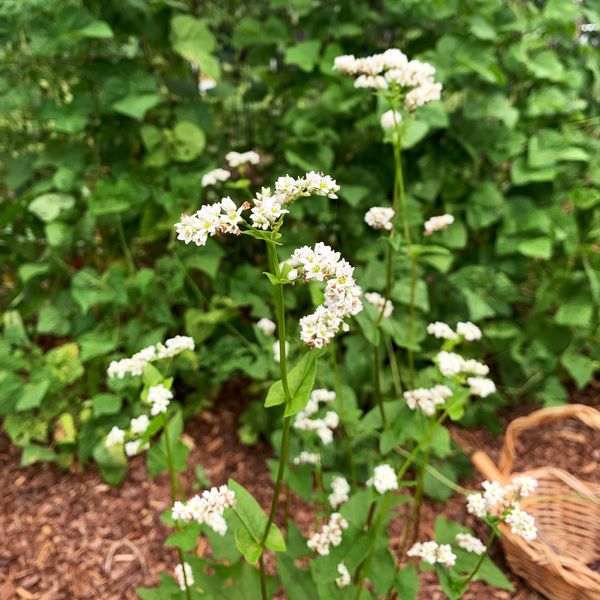
Loosens compacted soil. Buckwheat has fine roots and helps to loosen the topsoil if it’s compacted. This is especially ideal if you have clay-like soil.
Makes phosphorus more available. Another benefit of buckwheat is that its roots pull up phosphorus. The phosphorus is then stored in the plant tissue. When the plants are cut down, the phosphorus is released back into the topsoil, made more available for future crops.
Conditions the soil. After you cut back buckwheat, you may notice the soil’s tilth more workable. That is because buckwheat conditions your soil. Whatever crop you have planned to replace your buckwheat is able to be planted into soil with better tilth and structure than if you had not planted buckwheat prior.
Repels pest insects. I’ve also read, but can’t attest personally to the fact, that buckwheat is a good option as an organic pest control. Specifically, it might to help to repel thrips, leafhoppers, and mealybugs.
How to grow buckwheat
Ideal Planting Conditions
Timing. Buckwheat is a summer crop, so it does need to be planted after your average last frost date, but the warmer the soil the better in this case. An ideal place to plant this crop is after any spring or early summer crops have already harvested.
Buckwheat needs about 6 weeks of growth time to bring the crop to full maturity. If you only have a few weeks, I’d still plant it, as some value is still added to your soil, even if it doesn’t get to the flowering stage.
Soil. Buckwheat isn’t temperamental when it comes to soil conditions, but well-draining soil is preferred.

How to Plant
Soil preparation. Cornell University recommends watering your soil about an inch a few days ahead of planting. The reason is this: too wet of soil can hurt germination, but the soil needs moisture. Watering and waiting can provide the optimum germination conditions for buckwheat.
Personally, I’ve never done this. I tend to scatter the seeds and water.
Planting. Buckwheat seeds need to be planted densely in order to choke out weeds. Ideally, you want the plants no further apart than 6″ (and as close as 3″ apart has worked well for me). Seeds also need to be planted no more than 1/2 to 1 inch deep.
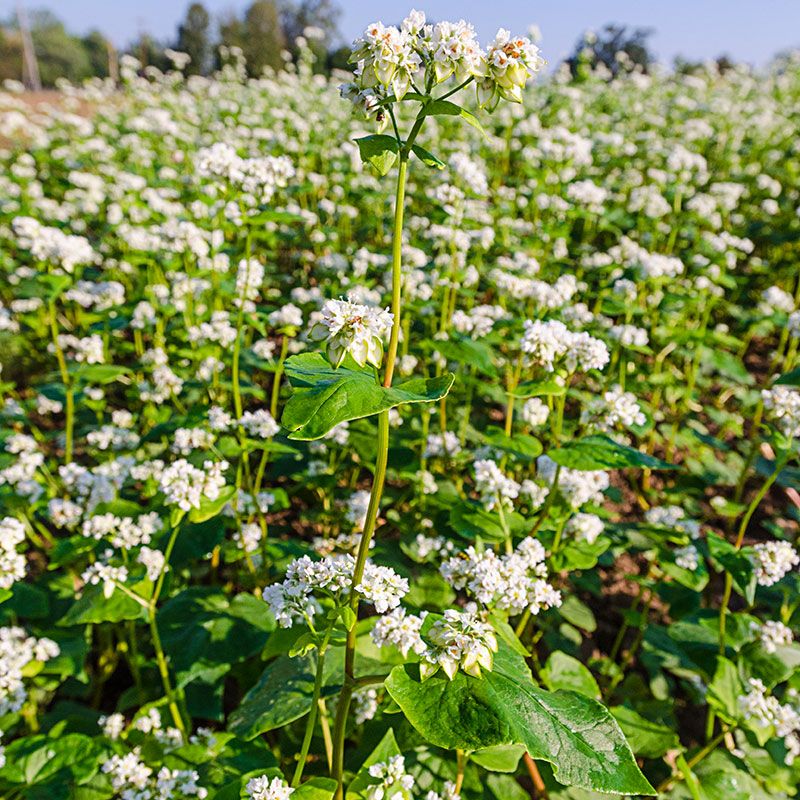
Growing Buckwheat
In ideal soil conditions, buckwheat germinates within a week. By week 4, your plant should be 2 to 3 feet tall. In some cases, it may even get taller. Left on its own, it will flower in about the sixth week and then drop seeds a couple of weeks after that. If you don’t want it to go to seed (resulting in volunteer buckwheat seedlings in the future), you need to cut it down after it flowers, within two weeks of first flower.
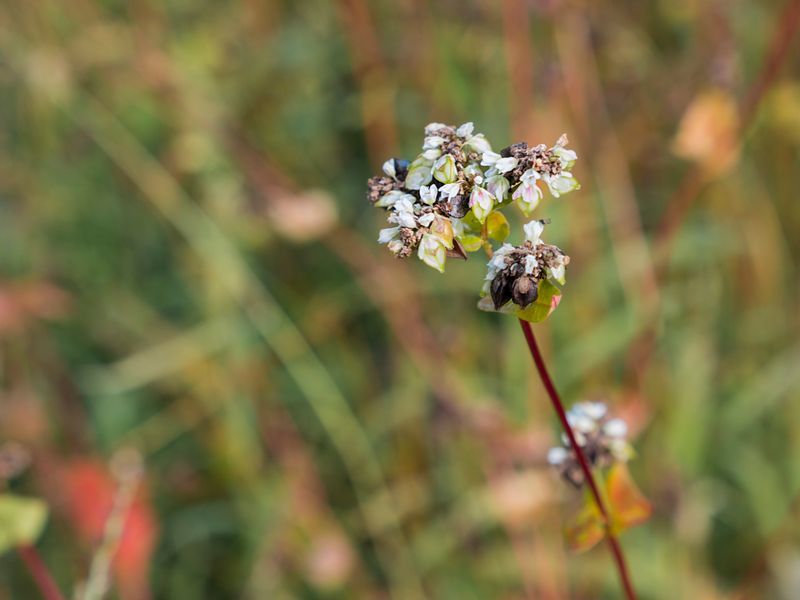
Depending on your timing, you may not need to cut down buckwheat since it won’t survive a frost, but in most cases, I’ve had to cut down buckwheat to prepare for the next planting. Don’t worry, cutting it down in a home garden isn’t hard.
Cutting down Buckwheat
Buckwheat is one of the easiest crops you can manage. I just take hedge trimmers and snip the stems off at the base and let the plants lay on top of the soil. This method is known as chop-and-drop. Usually, I then chop it into finer pieces with a hoe and lightly mix it into my top layer of soil.
This isn’t completely necessary, but it’s a bit like composting. The finer the materials, the more quickly the material will break down. Ideally, you’ll want to wait a few weeks before planting a new crop so that the crop residue can decompose into the soil. (The times I’ve skipped this “waiting period” I have planted transplants directly into the soil beneath the residue, using the residue as a mulch.)
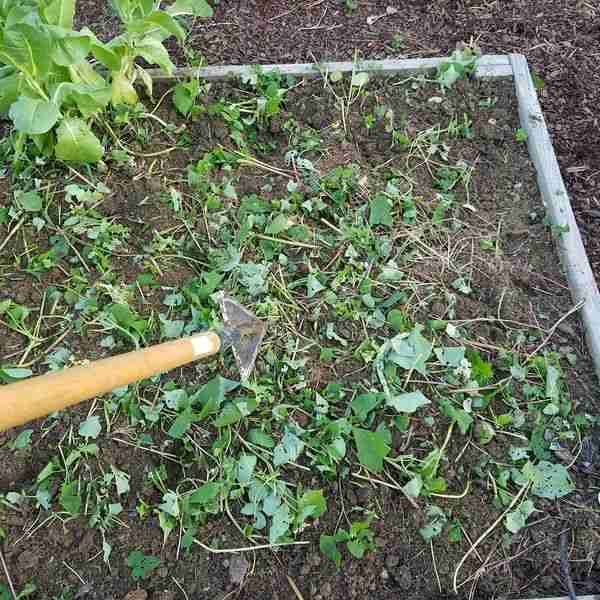
If you’re not a no-till gardener, you can also till it into your garden so that it breaks up more quickly and helps stabilize that soil at a faster rate, but in doing that, the nutrients will be used up more quickly.
Whichever way you choose to incorporate the finished buckwheat crop into your soil, it feeds your soil and enriches your soil stability.
–
As I hope you can see, growing buckwheat is relatively easy, beneficial, and such a naturally rich crop for our gardens. It’s the perfect “gateway” into using cover crops. I hope you do consider growing it this year!
If you need buckwheat seed, I recommend my affiliate partner, True Leaf Market. Browse their selection of cover crop seeds here.
Do you get overwhelmed with garden planning?

Subscribe here for my best tips to plan your garden in just 7 days -- all for FREE.
Plus, I'll send you my "In the Garden E-mail" on Fridays, periodic updates on garden resources relevant to you, and you'll receive access to my entire bank of free garden downloads!
You are also agreeing to our privacy policy.

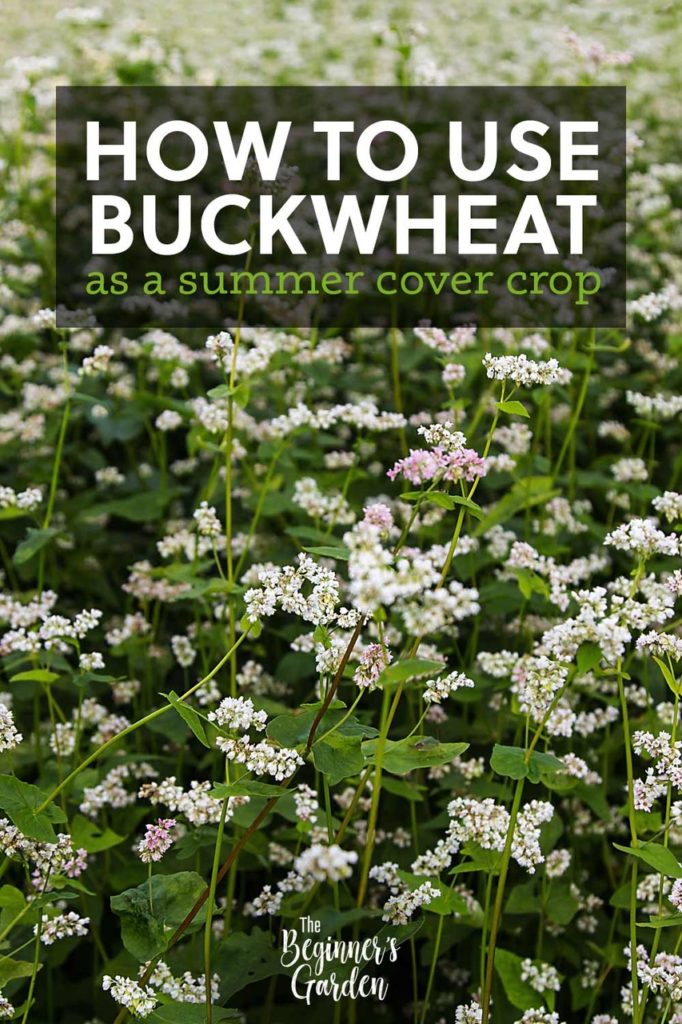
Hi Jill,
I’m an avid podcast listener and truely appreciate all of the help you give to beginner gardeners. Just wanted to drop a line to let you know, I ordered buckwheat and a couple other cover crops (before the deadline) on June 29th and used the code SUMMERCOVER21. They said that the code was not available to use and I did not get my free “lettuce” seeds. Not sure why but wanted to let you know, in case others had that problem.
Thanks for all you do
I like the idea of using buckwheat as a summer cover crop. Such a good read! I came across interesting ideas for gardening as well, like Bokashi Composting. I will start gardening soon.